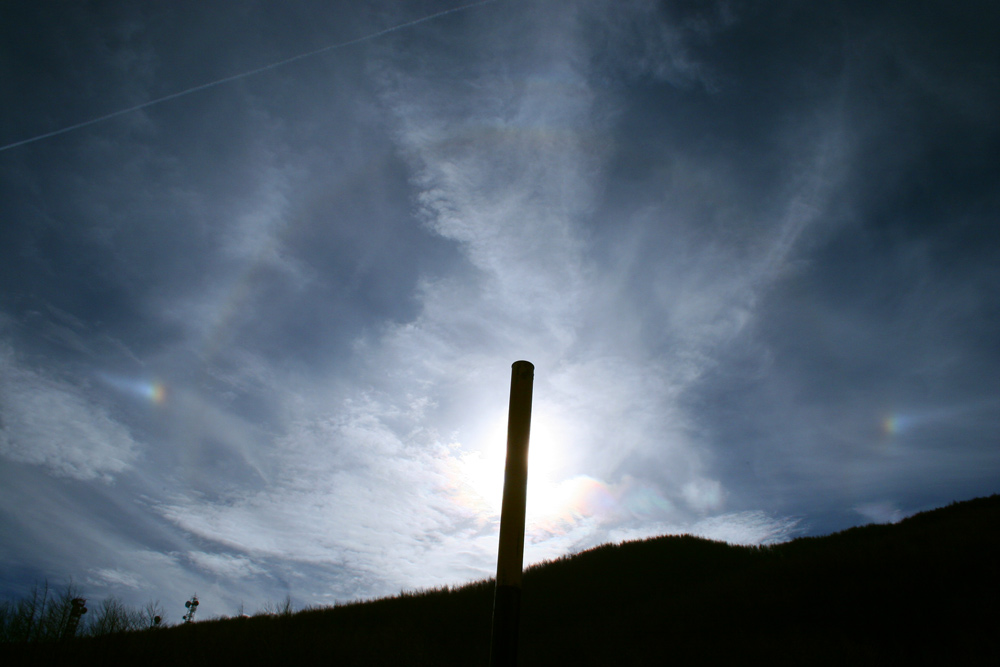
| Alone solare con due pareli |
|
La foto è stata scattata con una Canon Eos 20D e un obbiettivo 18 mm F:13 con
esposizione di 1/6400 di secondo a 400 ISO. Quando il cielo è velato da sottili nuvole denominate cirri è possibile vedere l'alone di 22° di raggio. Queste sottili nuvole sono molto fredde e contengono cristalli di ghiaccio. I raggi del sole sono diffratti da questi cristalli dando origine all'alone. Una caratteristica dell'alone è che il suo raggio è sempre ampio 22° rispetto al Sole. A volte però è possibile vedere solo una parte dell'alone. Quando il sole è basso sull'orizzonte sono visibili anche i pareli. Il fenomeno è il più frequente fra i vari tipi di aloni solari. E' visibile normalmente con il sole abbastanza basso sull'orizzonte a una distanza di 22° da esso, parallelamente all'orizzonte. I Pareli presentano spesso colori brillanti in quanto i cristalli di ghiaccio scindono le varie componenti della luce. Nella foto inoltre è possibile vedere anche delle nuvole iridescenti, molto vicine al sole che è nascosto dal palo. |
| A sun halo with two sundogs |
|
The photo was taken using a Canon Eos 20D camera with a 180 mm lens at F:13,
exposing at 400 ISO for 1/2000 sec. When the sky is wisped or hazed with thin cirrus clouds you can see the 22° radius halo. These clouds are cold and contain ice crystals. The sun rays are diffracted by these crystals. The radius is always the same: 22°. Sometimes only a part of this halo are visibile. When the sun is low over the horyzon it's possible to see the sundogs. Sundogs (parhelia, mock suns) are, with the 22º halo, the most frequent of the halos. Look for them, especially when the sun is low, at each side and about 22° away. This is the same distance or more than the common circular halo. In this photo it's possible to see iridescent clouds too, close the pole that cover the sun. |